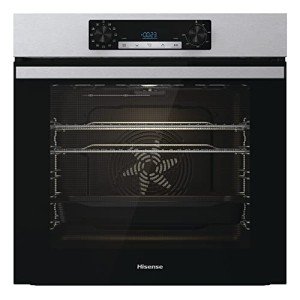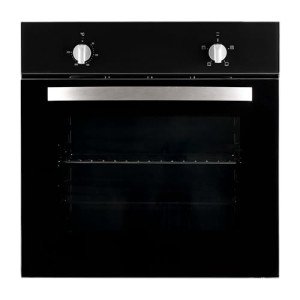
Best Single Fan Oven
Add a review FollowOverview
-
Sectors Banque
-
Posted Jobs 0
-
Viewed 12
Company Description
The People Who Are Closest To Single Oven UK Have Big Secrets To Share
The Comprehensive Guide to Single Ovens in the UK
In current years, the contemporary kitchen has experienced a renaissance, with house owners placing a precise focus on cooking home appliances that improve both performance and aesthetic appeal. Among the essential kitchen devices is the single oven, a staple for numerous British homes. This post dives into the various aspects of single ovens in the UK, including their types, features, advantages, and considerations for possible buyers.
Understanding Single Ovens
What is a Single Oven?
A single oven is a standalone or built-in cooking device developed to bake, roast, grill, and sometimes steam food, offering a vast array of culinary possibilities. As the name suggests, single ovens consist of one main compartment, differentiating them from double ovens, which provide 2 different cooking areas.
Types of Single Ovens
Single ovens can be found in numerous configurations and technologies. Below is a list of typical types found in UK kitchens:
-
Electric Single Ovens
- Utilizes electric coils or heating elements.
- Provides constant and efficient cooking.
- Frequently comes geared up with numerous features like self-cleaning cycles.
-
Gas Single Ovens
- Uses gas flames to generate heat.
- Understood for instantaneous heat and exact temperature control.
- Popular among chefs for their cooking performance.
-
Compact or Built-In Single Ovens
- Developed to fit into pre-existing kitchen cabinets.
- Conserves space while offering cooking adaptability.
- Available in both electric and gas designs.
-
Convection Single Ovens
- Geared up with a fan that flows hot air.
- Promotes even cooking, lowering cooking times.
- Typically enables for several rack positions for varied cooking.
Key Features to Consider
When choosing a single oven, there are a number of functions that consumers must keep an eye out for. This can significantly impact the use and performance of the home appliance in everyday cooking. Significant features include:
- Capacity: The interior capacity can vary commonly. The majority of single ovens use between 50 to 70 litres of cooking area, which is adequate for household meals.
- Energy Efficiency: Look for A-rated designs that save electrical power and minimize energy expenses.
- Self-Cleaning Options: Some ovens offer steam cleansing or pyrolitic cleaning, making maintenance easy.
- Setting Features: Programmable timers and settings can improve cooking precision, especially for baking.
- Safety Features: Some ovens include kid locks, recurring heat indications, and automated shut-off features for enhanced security.
Benefits of Choosing a Single Oven
Single ovens offer numerous benefits, making them popular choices for kitchen areas of all sizes. Here are some key advantages:
-
Space Efficiency: The compact size of a single oven saves kitchen area, which is especially helpful for apartment or condos and smaller homes.
-
Cost-Effectiveness: Typically, single ovens are more economical than double ovens in terms of preliminary purchase price and energy usage.
-
Simpleness of Use: With just one cooking compartment, single ovens are simple to operate, making them ideal for amateur cooks.
-
Flexibility: A single oven can deal with a multitude of cooking tasks– from baking bread to roasting meats– making it flexible enough for daily cooking experiments.
Installation Considerations
When thinking about buying a single oven, there are important installation aspects to reflect upon:
-
Size and Dimensions: Always inspect the area where the oven will be set up to make sure that it fits comfortably. The basic size for built-in models is generally around 60cm wide.
-
Power Supply: Determine whether you need an electric or gas oven based on existing kitchen components. An electrical contractor might be required for electric models.
-
Ventilation: Ensure appropriate ventilation, especially with gas ovens, to prevent the buildup of hazardous gases.
Popular Single Oven Brands in the UK
The market for single ovens What Is A Single Oven filled with a range of brand names, each offering special functions and dependability. The following table notes some of the most suggested brands together with their standout features.
| Brand name | Key Features | Price Range |
|---|---|---|
| Bosch | Dependable, effective, modern-day designs | ₤ 400 – ₤ 800 |
| Neff | Slide & & Hide door, user-friendly controls | ₤ 600 – ₤ 1,200 |
| Beko | Affordable options with good efficiency | ₤ 250 – ₤ 600 |
| John Lewis | Premium, stylish designs | ₤ 500 – ₤ 1,000 |
| AEG | Advanced technology and energy efficiency | ₤ 600 – ₤ 1,500 |
Frequently asked questions
Q1: Can I change my double oven with a single oven?
Yes, you can replace a double oven with a single oven, however make certain to confirm the offered area and power supply compatibility.
Q2: How much does it cost to run a single oven?
The running expenses of a single oven depend on its energy efficiency score and how typically it is utilized. Usually, an A-rated oven will be less expensive to run than lower-rated equivalents.
Q3: Are single ovens great for baking?
Definitely! Single ovens, specifically convection models, are well-suited for baking due to their uniformly distributed heat.
Q4: How long do single ovens typically last?
With appropriate maintenance, a single oven can last anywhere from 10 to 20 years. Routine cleaning and servicing can extend its life-span.

Q5: Do single ovens come with warranties?
Many makers offer a warranty ranging from one to 5 years, depending on the brand and model. It is a good idea to inspect warranty options before acquiring.
Single ovens play an important function in the modern UK kitchen, integrating performance, flexibility, and space-saving advantages. With a variety of types and functions offered, consumers can quickly find a single oven that meets their cooking requirements and choices. By considering the important elements highlighted in this article, house owners can make informed decisions, ensuring that their kitchen remains a hub for culinary creativity for several years to come.


